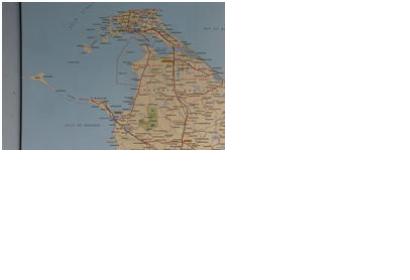
UN-SPIDER (UN Office for Outer Space Affairs) and Disaster Management Centre (Sri Lanka)
Uwa-Wellassa University of Sri Lanka, United Nations Development Programme (UNDP) Sri Lanka, and National Disaster Reduction Centre of China (NDRCC)
Introduction
The Disaster Management Centre (DMC) of the Ministry of Disaster Management (Sri Lanka) has coordinated hazard mapping activities with the funding support of UNDP since 2008. Under this program four major hazard mapping projects were launched which covered coastal, landslides, cyclone and drought hazards. The projects were implemented by relevant technical agencies and universities. While two projects are already completed, other projects will be completed in 2012. Flood hazard mapping was not launched, although the Department of Irrigation has mapped several river basins. Urban floods areas are mapped by Radar satellites to identify pockets of frequently flooding areas.
UN-SPIDER carried out Technical Advisory Mission (TAM) to Sri Lanka in October 2011. The mission team had in-depth discussions with all agencies involved in hazard mapping and identified the need to upgrade technical know-how in using space technology to improve hazard mapping. As a follow-up the recommendations in the TAM report, these agencies and other institutions will be provided an exposure on advances in space technology and its applications in hazard mapping.
Participants
Up to 30 middle level managers and technical staff of agencies involved in disaster management and hazard mapping in Sri Lanka will attend the event. The following agencies will be represented: Department Meteorology, Geological Survey and Mines Bureau, National Building Research Organization, Coast Conservation Department, Department of Irrigation, Disaster Management Centre, Department of Survey and Mapping, Department of Agriculture and Department of Census and Statistics. Universities will also be represented.
Objectives and topics of the training
The broad objective of the training is to implement recommendations made by the UN-SPIDER Technical Advisory Mission in order to strengthen the capacity of the national agencies to use Geo-Spatial Technologies for Hazard Mapping, Hazard Monitoring and Risk Assessments. The training programme will cover the following topics presented by international experts from the centres of excellence.
Flood Hazard Mapping: Flood is the most frequent disaster experienced in Sri Lanka and more likely affects more than 50 % of the country. Flood mapping by ground verification and by satellite observation has been conducted over the last few years. However, flood modelling was not conducted as research studies covering small geographical area. Participants will therefore be introduced to flood risk modelling and hazard mapping techniques.
Coastal Hazard Mapping: The next most important area of hazards are coastal hazards. Coastal hazard mapping and modelling techniques will be delivered in this session in the form of theory and hands-on sessions. An objective of this module is also to expose participants to the area of modelling coastal hazards.
DEM and LiDAR Analysis: Terrain modelling is very essential for most hazard mapping activities. Current trends on terrain acquisition and DEM (Digital Elevation Model) data processing is one of the key areas in hazard mapping. The participants will learn to identify suitable DEM, DEM processing and accuracy assessments prior to the hazard mapping activities.
NSDI (National Spatial Data Infrastructure) Initiatives: Consistent means to share geographic data among all users could produce significant savings for data collection and use and enhance decision making. Open data concepts and data sharing are essential to avoid duplication and increase productivity of geo-spatial users. The Government of Sri Lanka intends to initiate the NSDI framework with the leadership of the Ministry of Lands and Land Development, and assistance of the Information and Communication Technology Agency of Sri Lanka (ICTA). This session will discuss NSDI framework and its applications.
The participants will benefit from the experience shared by experts from various centres of excellence, the demonstrations of best practices in various countries and hands on sessions on the software tools. In addition, NDRCC is planning to present HJ-1 satellite data archive of Sri Lanka and license free image processing software, which can be used for hazard mapping as well as for natural resources mapping.
Experts
15 Experts from the following organisations and centres of excellence will contribute to the training:
International:
- UN-SPIDER Beijing Office, UN Office for Outer Space Affairs
- National Disaster Reduction Centre of China, Beijing
- China Institute of Remote Sensing, Chinese Academy of Sciences, Beijing, China
- Asian Institute of Technology, Bangkok, Thailand
- Tropical Marine Science Institute, National University of Singapore
- International Water Management Institute (IWMI), Colombo, Sri Lanka
- Digital Globe, Singapore
- Jena Instrument, Russia
- UN ESCAP Bangkok, Thailand
National:
- Disaster Management Centre
- Ministry of Lands and Land Development
- Uva Wellassa University
- Info-Communication Technology Organization
- Ministry of Land and Land Development
| Attachment | Size |
|---|---|
| Space Technology for Hazard Mapping - Programme.pdf (641.28 KB) | 641.28 KB |
